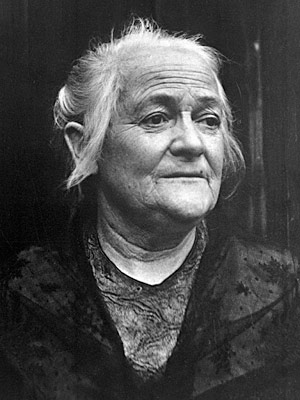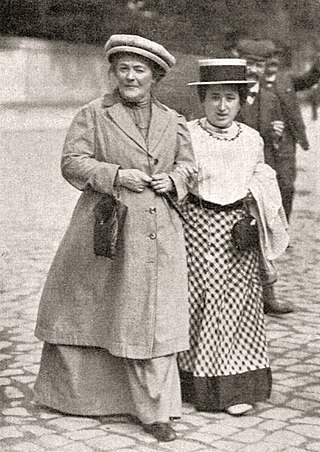
The Communist International (Comintern), also known as the Third International, was an international organization founded in 1919 that advocated world communism, and which was led and controlled by the Communist Party of the Soviet Union. The Comintern resolved at its Second Congress in 1920 to "struggle by all available means, including armed force, for the overthrow of the international bourgeoisie and the creation of an international soviet republic as a transition stage to the complete abolition of the state". The Comintern was preceded by the dissolution of the Second International in 1916. Vladimir Lenin, Leon Trotsky, and Joseph Stalin were both honorary presidents of the Communist International.
The history of the Communist Party of the Soviet Union was generally perceived as covering that of the Bolshevik faction of the Russian Social Democratic Labour Party from which it evolved. In 1912, the party formally split, and the predecessor to the Communist Party of the Soviet Union became a distinct entity. Its history since then can roughly be divided into the following periods:

Clara Zetkin was a German Marxist theorist, communist activist, and advocate for women's rights.

The Social Democracy of the Kingdom of Poland and Lithuania, originally the Social Democracy of the Kingdom of Poland (SDKP), was a Marxist political party founded in 1893 and later served as an autonomous section of the Russian Social Democratic Labour Party. It later merged into the Communist Workers Party of Poland. Its most famous member was Rosa Luxemburg.

Paul Levi was a German communist and social democratic political leader. He was the head of the Communist Party of Germany following the assassination of Rosa Luxemburg and Karl Liebknecht in 1919. After being expelled for publicly criticising Communist Party tactics during the March Action, he formed the Communist Working Organisation which in 1922 merged with the Independent Social Democratic Party. This party, in turn, merged with the Social Democratic Party a few months later and Levi became one of the leaders of its left wing.

The International Socialist Congress, Stuttgart 1907 was the Seventh Congress of the Second International. The gathering was held in Stuttgart, Germany from 18 to 24 August 1907 and was attended by nearly 900 delegates from around the globe. The work of the congress dealt largely with matters of militarism, colonialism, and women's suffrage and marked an attempt to centrally coordinate the policies of the various socialist parties of the world on these issues.
The Kienthal Conference was held in the Swiss village of Kienthal, between April 24 and 30, 1916. Like its 1915 predecessor, the Zimmerwald Conference, it was an international conference of socialists who opposed the First World War.
During the First World War there were three conferences of the Socialist parties of the non-belligerent countries.
The Vienna Socialist Conference of 1915 gathered representatives from the Socialist parties of Germany, Austria and Hungary to the only meeting of the pro-war socialist parties of the Central Powers during World War I.
The Third Zimmerwald Conference or the Stockholm Conference of 1917 was the third and final of the anti-war socialist conferences that had included Zimmerwald (1915) and Kienthal (1916). It was held in Stockholm on September 5–12, 1917.
The International Federation of Socialist Young People's Organizations was a federation of youth organizations affiliated with the Socialist parties of the Second International.
During the First World War there were a number of conferences of the socialist parties of the Entente or Allied powers.

The Communist Women's International was launched as an autonomous offshoot of the Communist International in April 1920 for the purpose of advancing communist ideas among women. The Communist Women's International was intended to play the same role for the international women's movement that the Red Peasant International played for poor agrarians and the Red International of Labor Unions played for the international labor movement.

The Zimmerwald Conference was held in Zimmerwald, Switzerland, from September 5 to 8, 1915. It was the first of three international socialist conferences convened by anti-militarist socialist parties from countries that were originally neutral during World War I. Forty-two individuals and eleven organizations participated. Those participating in this and subsequent conferences held at Kienthal and Stockholm are known jointly as the Zimmerwald movement.
The International Socialist Commission, also known as the International Socialist Committee or the Berne International was a coordinating committee of socialists parties that adhered to the idea of the Zimmerwald Conference of 1915.

Karl Berngardovich Radek was a revolutionary and writer active in the Polish and German social democratic movements before World War I and a Communist International leader in the Soviet Union after the Russian Revolution.
Louise Saumoneau was a French feminist who later renounced feminism as being irrelevant to the class struggle. She became a union leader and a prominent socialist. During World War I she was active in the internationalist pacifist movement. In a change of stance, after the war she remained with the right of the socialist party after the majority split off to form the French Communist Party.

Albert Henri Bourderon was a French cooper and syndicalist who became a leading socialist. During World War I he supported a pacifist position in line with internationalist principles.

The Second International, also called the Socialist International, was an organisation of socialist and labour parties, formed on 14 July 1889 at two simultaneous Paris meetings in which delegations from twenty countries participated. The Second International continued the work of the dissolved First International, though excluding the powerful anarcho-syndicalist movement. While the international had initially declared its opposition to all warfare between European powers, most of the major European parties ultimately chose to support their respective states in World War I. After splitting into pro-Allied, pro-Central Powers, and antimilitarist factions, the international ceased to function. After the war, the remaining factions of the international went on to found the Labour and Socialist International, the International Working Union of Socialist Parties, and the Communist International.
Edwin Charles Fairchild (1874–1955) was a socialist activist and conscientious objector during the First World War.











